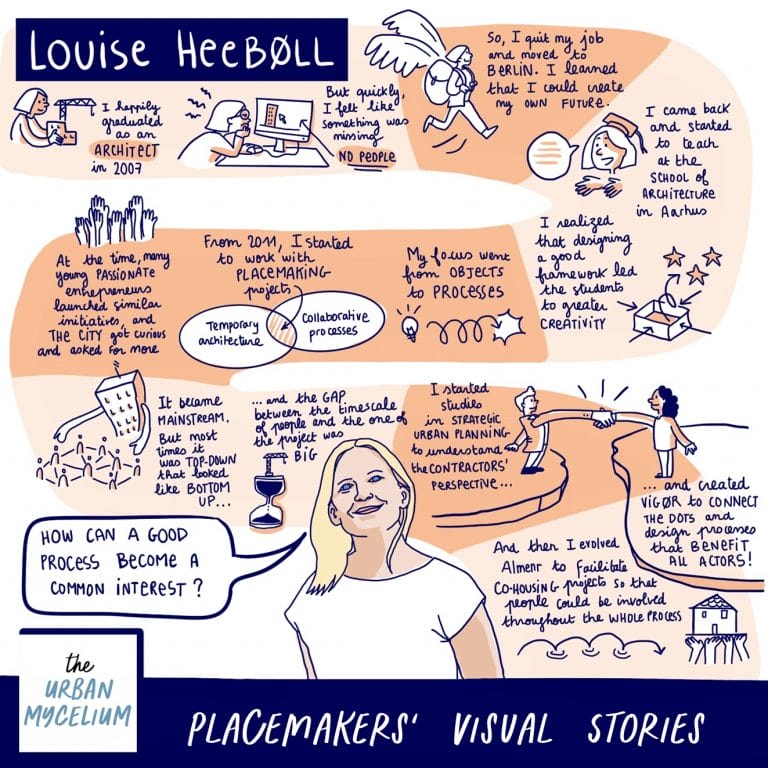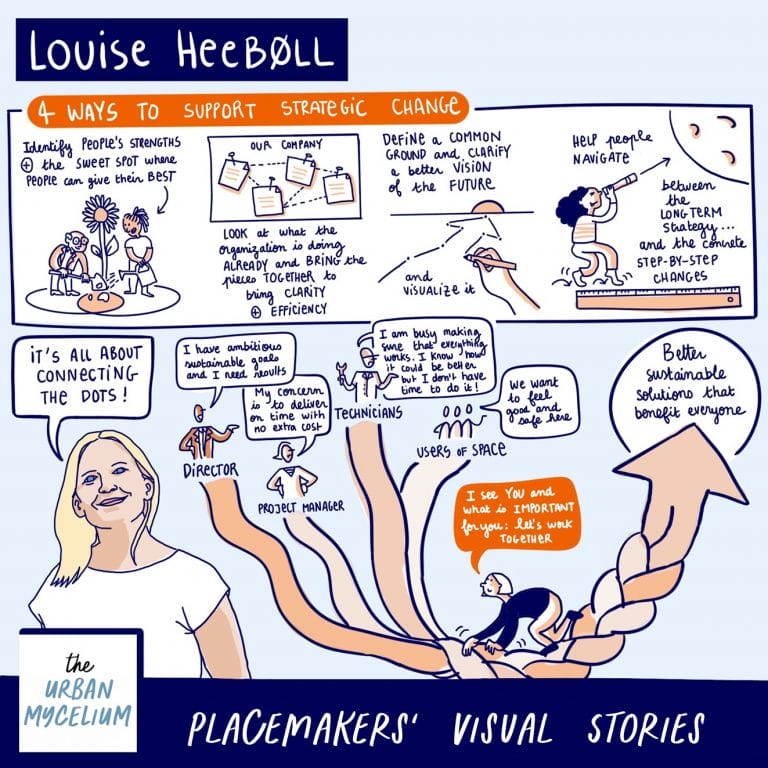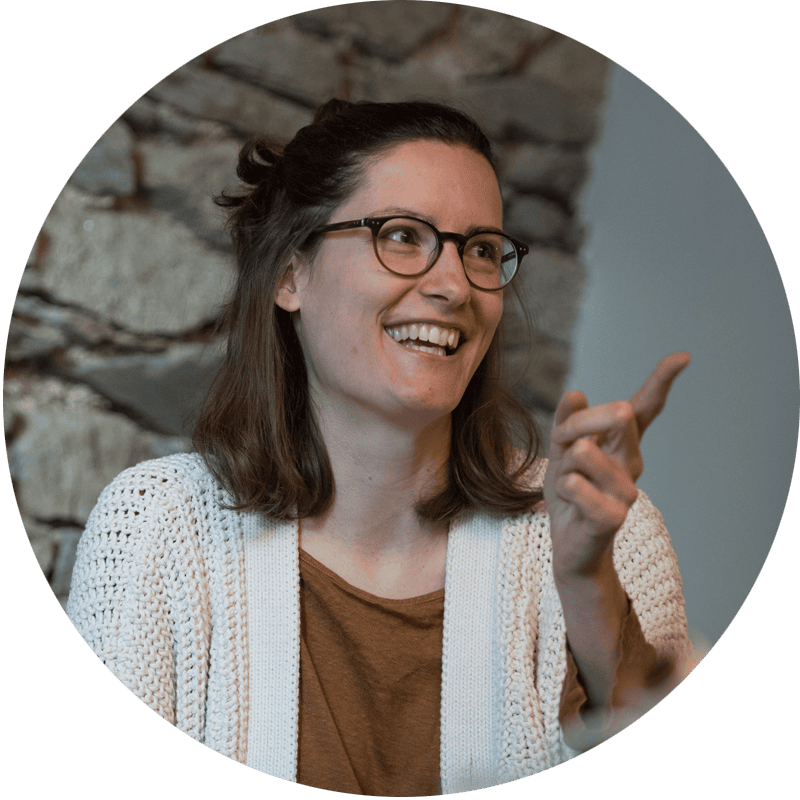In this episode of the Placemakers’ Visual Stories, I was happy to interview Louise Heebøll, architect and today consultant in sustainable development at Vigør. We talked about the posture it takes to lead strategic change and participatory processes in urban planning. From the residents and users of the city to property developers, designers and municipalities, everyone has various needs and challenges. It is essential to connect the dots, Louise says!
Shortly after she graduated as an architect, Louise realized that the nice buildings she was designing were lacking something important: people. Her focus switched from objects to processes, as she became more and more interested in participatory processes. For many years, she led placemaking projects in Copenhagen, helping local communities transform public spaces in the city. By doing so, she realized the gap between the users of the city and the decision makers, whose needs and challenges are very different. Now, Louise is passionate about connecting the dots between these various stakeholders in order to find solutions that truly benefit everyone.
In this interview we talked about:
- Louise’s journey from being an architect to leading strategic change for municipalities and companies in the building industry
- How a good collaborative process can benefit both the decision makers and the users of the city
- Concrete ways to support strategic change in municipalities and companies in the building sector
Discover more about Louise:
- Her work at Vigør
- Louise’s LinkedIn page



